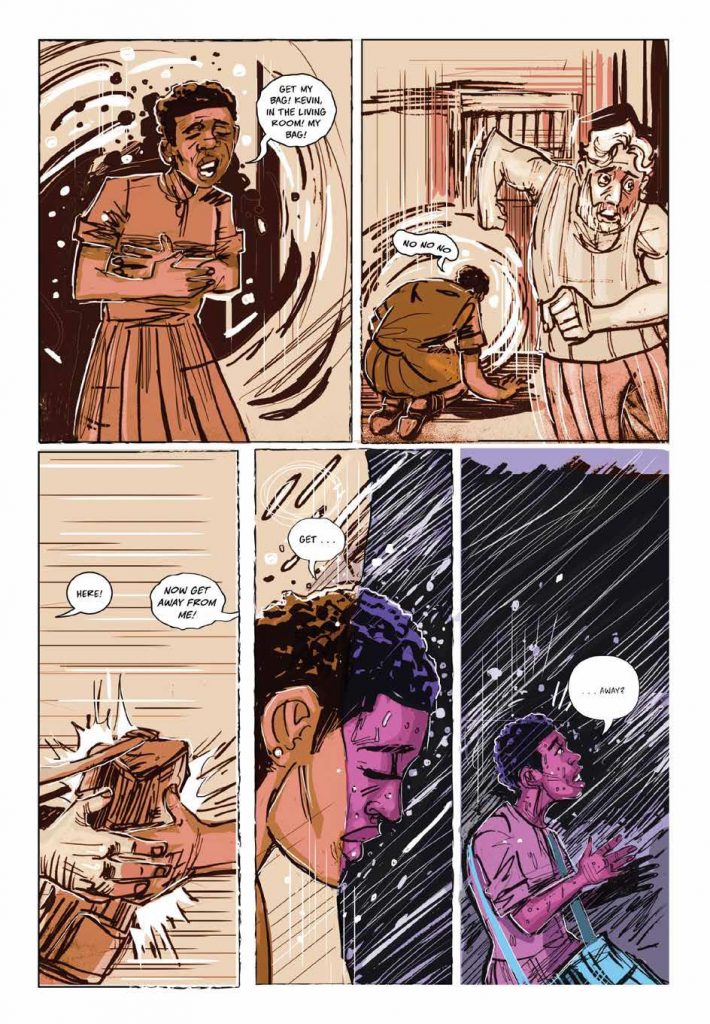John Jennings discusses the challenge of transforming the beloved classic into a best-selling graphic novel.
 (EMPIRE NEWS NETWORK (ENN)— RIVERSIDE, CA— For graphic novelist and illustrator John Jennings, transforming Octavia E. Butler’s classic “Kindred” into a graphic novel was both physically and emotionally draining.
(EMPIRE NEWS NETWORK (ENN)— RIVERSIDE, CA— For graphic novelist and illustrator John Jennings, transforming Octavia E. Butler’s classic “Kindred” into a graphic novel was both physically and emotionally draining.
Jennings, a professor of media and cultural studies at the University of California, Riverside, created the adaptation with fellow scholar, graphic novelist, and longtime collaborator Damian Duffy for Abrams ComicArts.
Published in January 2017, “Kindred: A Graphic Novel Adaptation” debuted at No.1 on the New York Time’s Best Sellers list for hardcover graphic books and has received wide acclaim, garnering a Bram Stoker Award among other honors. Now, it is a finalist for this year’sEisner Awards for best adaptation from another medium.
Jennings, who provided the illustrations for the 240-page book, called the 11-month process “a small miracle.” The work took a physical toll — Jennings injured his shoulder while working on the illustrations — but also an emotional one.
Originally published in 1979, Butler’s story focuses on Dana, an African American woman who is transported to a pre-Civil War-era Maryland plantation, returning numerous times to help her white ancestor Rufus whenever he finds himself in grave danger. Trapped in the past, she experiences firsthand the harrowing cruelty inflicted on her own enslaved ancestors and later, herself.
Turning Butler’s book into a graphic novel presented Jennings and Duffy with several unique challenges, from figuring out how to truncate Butler’s seminal work while doing it justice, to the many aesthetic considerations involved in converting prose to a highly visual medium.
“You can’t go word-for-word with a comic book adaptation because they handle storytelling differently,” Jennings said. “We actually had less pages to tell the same story. Octavia was a masterful writer, but even with the terseness of her words, we still had hundreds of words that had to be cut and instead shown. That’s the thing in comics books; you need to show, don’t tell.”
To depict the time periods, Jennings played with the book’s color schemes, muting the present day and making the past full-color.
“Normally when you’re doing flashback stories, the current day is vibrant and in color and the past is kind of sepia-toned, but we wanted to do something different,” Jennings said. “We wanted to play around with the fact that in the book, Octavia talks about how vibrant and how real the past was, and how bright and harsh it is, so we decided to do the opposite.”
For the scenes in the present, Jennings drew inspiration for the color tones from an unlikely place.
“I actually sampled some of the colors from bruises and blood. The idea is that it’s her blood relationship to Rufus that continues to pull her back. It’s about family ties. That red is actually the color of what scabbed-over blood looks like.”
In Butler’s novel, time travel is more supernatural than scientific. To achieve this transition in the graphic novel, a subtle breakdown of the borders of the panels occurs. The lines become fractured and frenetic as Dana is pulled back and disappear completely when she finds herself on the other side of time.
Jennings found the experience of immersing himself so deeply in slavery especially difficult, noting he is a descendent of slaves in the South.
“I was crying physically onto the pages that I was drawing, because it’s so powerful, and so prescient, and so meaningful still today in the middle of the Black Lives Matter era. How do you get across visually the feeling of this book? My drawings were really manic, and energetic, and they make people uncomfortable.”
Despite the arduous process of creating the graphic novel, Jennings found the experience hugely rewarding, and it served as his first foray into mainstream work.
“These are things that really effect black people in America still, the wages of slavery which I think our country is still paying, and you can see how that presents itself in our current political climate,” Jennings said.
In graphic novel form, “Kindred” is offering new audiences a chance to experience Butler’s thought-provoking work.
“Some people who have never read comic books before have picked up ‘Kindred,’ Jennings said. “A lot of the time, it’s the first sci-fi or speculative story people have read, because sci-fi is still dealing with representation issues with people of color.”
Jennings will be at this year’s Comic-Con in San Diego, participating in several panels and attending the Eisner Awards ceremony on July 20. Known as the “Oscars” of the comic book industry, the awards are named for the pioneering comics creator and graphic novelist Will Eisner. Jennings previously received an Eisner for his scholarly work, “The Blacker the Ink,” but the nomination for “Kindred” marks the first time he has been nominated for his graphic novel work as an artist.
“It’s a huge honor, especially to represent Octavia Butler’s legacy,” Jennings said of the author, who died in 2006. “I’m so glad we are a part of getting people to read her work and push her into the future. I’m hoping that if she’s out there somewhere looking at us, that she’s happy with what we’ve done, and we want to continue celebrating her.”
A softcover adaptation of “Kindred” is due at the end of July, and the adaptation will also be translated to Spanish, French, and Swedish, with those editions released in the fall.
John Jennings at Comic-Con
Jennings will be participating in five panels during Comic-Con International: San Diego. In addition to the various panels, he will also be attending the post-con offsite event, AfroFuturism Lounge, which he helped organize. Catch Jennings at the following panels and events:
Friday, July 20
- Comics Arts Conference #7: Intersectional Identity in Box of Bones
1-2 p.m., Room 26AB - In-booth signing with John Jennings at Abrams Booth No. 1216
3:30-4:30 p.m. - Diversity and Inclusivity from the Perspective of Libraries/Publishing/Authors in the Industry
5:30-6:30 p.m., Room 8
Saturday, July 21
- Comics Are for Everyone . . . Aren’t They?
10-11 a.m., Room 4 - Adapting Folklore, History, and Myth in Comics
2-3 p.m., Shiley Special Events Suite, San Diego Central Library - Abrams ComicArts: Reaching Every Reader: New Trends in Graphic Novels for Adults and Kids
4-5 p.m., Room 28DE - In-booth signing Abrams Booth No. 1216
5:30-6:30 p.m.
Friday, July 20 – Saturday, July 21
- The AfroFuturism Lounge
7-11 p.m., The Broker’s Building Gallery
 Westside Story Newspaper – Online The News of The Empire – Sharing the Quest for Excellence
Westside Story Newspaper – Online The News of The Empire – Sharing the Quest for Excellence




